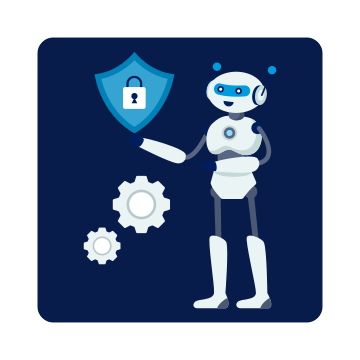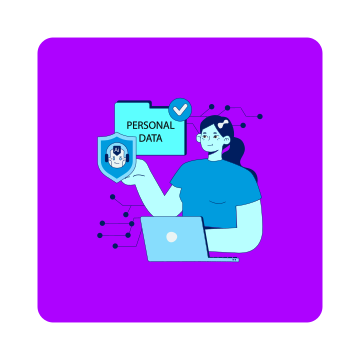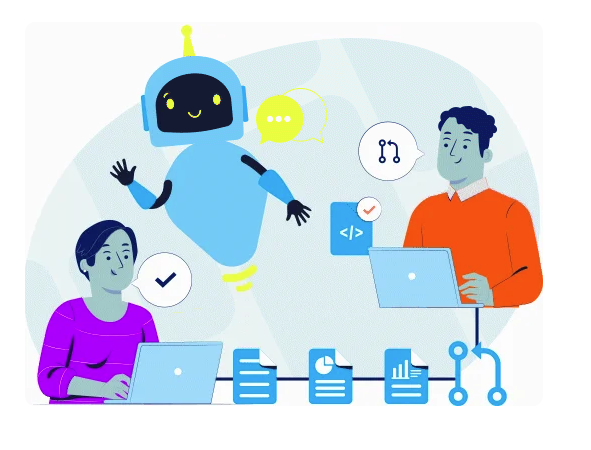8 Steps to Build a Robust Security Framework for Automation
Automation security has always been a major focus for RPA leaders. While security is a critical element of the SDLC (software delivery lifecycle), ensuring automated processes access the right applications and systems correctly while treating sensitive data securely is a constant effort.
Even with a seasoned and highly skilled technical team well-versed in security considerations when delivering automations, this element of automation development still requires rigid commitment and diligence. With the emergence of AI-assisted automation delivery with tools like Microsoft Copilot, security will take a front seat in all automation practices.
Here are the eight steps to build a robust security framework for automation. Even if you already have strong security practices that govern your automation SDLC, there might be elements you might have missed or actionable ideas in this article that can make your commitment to security that much stronger and impenetrable.
Step #1 – Conduct an Automation Risk Assessment
Regardless of where you are in your automation journey, your first step to building a robust security framework should be performing an automation risk assessment.
An automation risk assessment should identify the sensitive data that automated processes will access and potential vulnerabilities. Understanding the impact of the risks on your business operations and compliance mandates that your assessment identifies will indicate the security measures you will need to implement.
Ideally, you have a solution that can run these security tests automatically to streamline the effort involved and automate continuous security testing and screening.
Step #2 – Implement a Governance Model and Define the Roles Within That Model
A governance model with clearly defined rules is critical for promoting and maintaining security standards in any automation practice. An automation governance model may take the shape of a Center of Excellence (CoE) that’s either centralized, decentralized or even federated.
Whatever governance framework you decide is best for your organization’s needs, the stakeholders within it should oversee and govern all automation deployments, compliance monitoring according to internal policies and external regulations, and manage user access controls to optimize security protocols.
Roles and responsibilities for both the digital workforce (your bots or automated processes) and human employees must be explicit and clearly defined to ensure accountability and control.
Step #3 – Establish Strict Access Controls
Access controls are a critical component of automation security. They protect against unauthorized access to automation systems and applications with which bots interact.
The best practice is to set up role-based access controls (RBAC) so that only authorized bots can access the data and applications they should have access to. Your SysOps or internal security team has likely already set up RBAC for human employees. There are certainly applications and systems in your organization that you can’t access. The same needs to be done for the automated processes in your RPA estate.
Hardcoding credentials in scripts and software should also be avoided, as this can pose a security risk and increase vulnerability.
Step #4 – Secure the Credentials for Your Automated Processes
As mentioned in step 3, your automations will normally require credentials to access your organization's applications, systems, and data to execute the processes they were designed to complete automatically.
Where possible, secure vaults should be used to store the credentials for those corresponding bots so that they can only access what they need to perform their business tasks, as is the case with any other full-time employee at your company.
Step #5 – Monitor and Audit the Behaviour of Your Automations
Continuously monitoring the behaviour of your automations and performing security audits can help pre-emptively detect unusual bot behaviour and mitigate security breaches. Ideally, you have the technology to perform automated security checks to limit manual effort and optimize your security checks.
Automatically logging bot interactions and auditing mechanisms are also strongly recommended for internal and external auditing purposes.
Step #6 – Establish Incident Response and Recovery Plans
Even with the most steadfast security measures and protocols, security incidents can still happen. For that reason, automation practices must have a defined incident response plan.
Your incident response plan should define the steps to rapidly identify, contain, and mitigate security breaches. A recovery plan also promotes business continuity so operations can be quickly restored after an incident or disruption.
Step #7 – Implement Continuous Compliance
Non-compliance can lead to expensive fines and hefty penalties. Automated processes and systems must comply with numerous industry regulations and standards. The compliance mandates and regulations are greater for organizations operating in heavily regulated industries.
It’s vital that you routinely update your security practices and controls so that they’re compliant with the regulations you must adhere to. Once again, the best measure is to invest in technology that can continuously run compliance checks on your automations.
Step #8 – Make Your Automation SDLC Secure
Security considerations must be included in the process of designing and delivering automations. For tenured automation developers, these professionals tend to already follow secure coding practices and conduct security testing for vulnerability assessments or penetration testing before a bot is delivered.
As AI-assisted automation delivery with tools like Microsoft Copilot becomes more common, ensuring security is baked into each delivered automation will become more of a challenge. One solution gaining a lot of momentum, is the introduction of automated security technology that can assess bots for vulnerabilities and risks, primarily if they’ve been delivered by business users with AI assistance.
Conclusion
Implementing a robust security framework for automation has always been critical. As automation delivery becomes more democratic with the introduction of AI-powered tools like Microsoft Copilot, it’s primed to take center stage.
Securing your automation practice is an ongoing endeavour. As needs and regulations evolve, so do vulnerabilities, threats, and risks. Following the steps outlined in this article is a good start. Gaining an upper hand with security-minded solutions is even better.
Share this
Recent Stories

The 5 Pillars of Automation Security

Emerging Dangers: Generative AI’s Risks on Automation Security


